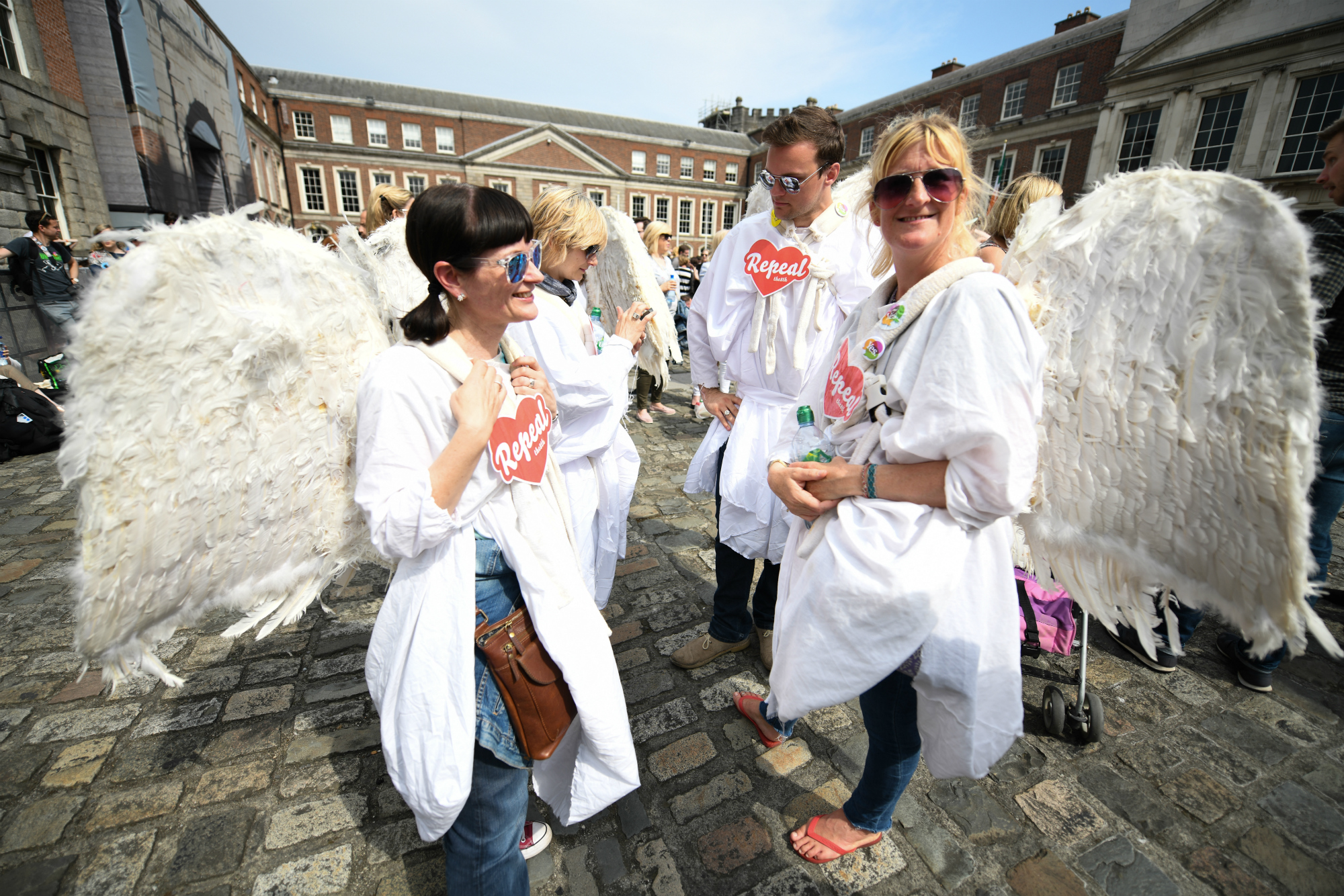
Institutions have begun preserving the art created by people on both sides of the Irish abortion debate, which led to the historic referendum on May 25 and the landslide vote to repeal the country’s abortion ban.
Brenda Malone, a curator at the National Museum of Ireland, was quick to use social media to appeal to people to preserve banners in particular. Malone tells artnet News that on her wish list is a knitted one with the words “Repeal the 8th” on top of a red heart, which became one of the defining and contentious images of the campaign.
Cian O’Brien painting over most of Maser’s mural at Dublin’s Project Arts Centre. Image by Ste Murray, Photocall Ireland.
This particular repeal banner was inspired by a mural by the street artist Maser on Dublin’s Project Arts Centre wall, which went viral when the center was forced to paint over it, not once but twice. The second cover-up led to a protest in the street and on social media. Only this time the center cleverly subverted the ban by leaving a tiny part of the edge of the love heart visible. Alongside the concealed work a pointed slogan was added saying: “You can paint over a mural but you can’t paint over an issue.”
First created by Maser in 2016 at the start of the campaign to allow abortion, it was painted over after Dublin Council objected to it on the grounds that it needed planning permission as it was a “political advertisement.” Cian O’Brien, the artistic director of the Project Arts Centre, says: “We discovered that during the course of the referendum there was a planning loophole.” So, the mural went up again only for the center to receive another letter, this time from the Charity Regulator, saying the work violated its charitable purpose. “Art is not a charitable purpose,” O’Brien discovered. “They applied a very strict reading of the law.”
Show of solidarity with the message of Maser’s painted over mural at Dublin’s Project Arts Centre. Image by Ste Murray, Photocall Ireland.
“I’m leaving the shadow of it there for the moment,” he says, partly because the center is currently showing Jesse Jones’s Tremble Tremble, a feminist take on women’s oppression, by the male-dominated judiciary in particular. Jones’s installation, which is on show through July 18, made its debut in Ireland’s pavilion at last year’s Venice Biennale. “Legally, to be honest, I don’t think we have to paint over it.” The center is also selling limited-edition prints of the mural fragment.
Brenda Malone says that she was “impressed but not surprised” at the level of creativity stirred up by the abortion referendum debate. “There were some really imaginative, quirky, witty, and strong banners on the streets that I’m trying to get hold of for the collection.”
Malone’s full remit is curator of Ireland’s military history, transport, flags and banners. “I’ve kind of sidelined World War I at the moment,” she admits, to make sure the banners on the “no” and the “yes” sides of the debate to relax the country’s hard-line abortion laws are collected and preserved. “There is a real community acknowledgement that this was an important moment in Ireland’s history that needs to be recorded by the national institutions,” she says. “I haven’t seen this before,” she says, adding that the last time the public felt so strongly about the need to record their stories was after the Easter Rising of 1916 and War of Independence.